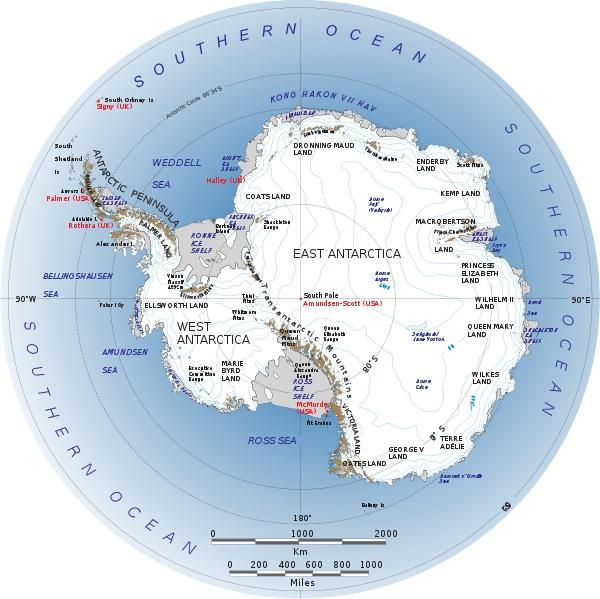West Antarctic Ice Sheet's Age Gains 20 Million Years

The West Antarctic Ice Sheet could have formed 20 million years earlier than previously thought, researchers propose, after updating a detail in global climate models, placing more confidence in those models' ability to predict future changes in global climate.
The West Antarctic Ice Sheet accounts for only about 10 percent of the ice on the continent today. It sits below sea level and is subject to melting from warm air and seawater infiltration, more so than the larger East Antarctic Ice Sheet, which sits at a higher elevation.
Researchers have long assumed that West Antarctica has always sat at this low elevation and has thus always been less amenable to holding ice sheets as large as those in East Antarctica.
Higher ground
More recently, however, researchers have suggested that West Antarctica may have had a much higher elevation in the past, and has since been ground down to sea level by the ice sheet's glaciers, or erosive rivers of ice.
Based on the thickness of marine sediment layers off the coast of Antarctica — the presumed remnants of past mountain ranges that had been ground away by glaciers — researchers at the University of California, Santa Barbara, recently estimated that West Antarctica could have been hundreds of meters higher in the past than it is today. [Antarctica Video: Solving Geologic Mysteries]
With these new topographic estimates, the researchers have updated ice sheet models and have shown that with that difference in elevation, the West Antarctic Ice Sheet could have grown to a substantial size around 34 million years ago, 20 million years earlier than thought. The team reported its findings this week in the journal Geophysical Research Letters.
Sign up for the Live Science daily newsletter now
Get the world’s most fascinating discoveries delivered straight to your inbox.
Model confidence
"I think this gives us a little more confidence in the models that are being used to predict how ice is changing with [modern] changes in carbon dioxide levels," said study co-author and geophysicist Doug Wilson.
Models that reconstruct global climate have suggested that large volumes of ice formed across the planet around 34 million years ago, during a cool period. However, these models have never been able to reconcile where on the planet this ice could have formed: About one-third of the predicated volume has been unaccounted for, Wilson said.
Now, by raising the elevation of West Antarctica, the researchers have identified a plausible location and have been able to account for the remainder of the ice volume predicted by these models.
"The main thing wrong was the topography, and that gives us more confidence that the predicting behavior of ice from these climate models is not that bad," Wilson said.
The team next plans to focus on other periods in West Antarctica's history by reassessing how topography may have changed through other periods of time.
Follow Laura Poppick on Twitter. Follow LiveScience on Twitter, Facebook and Google+. Original article on LiveScience.










